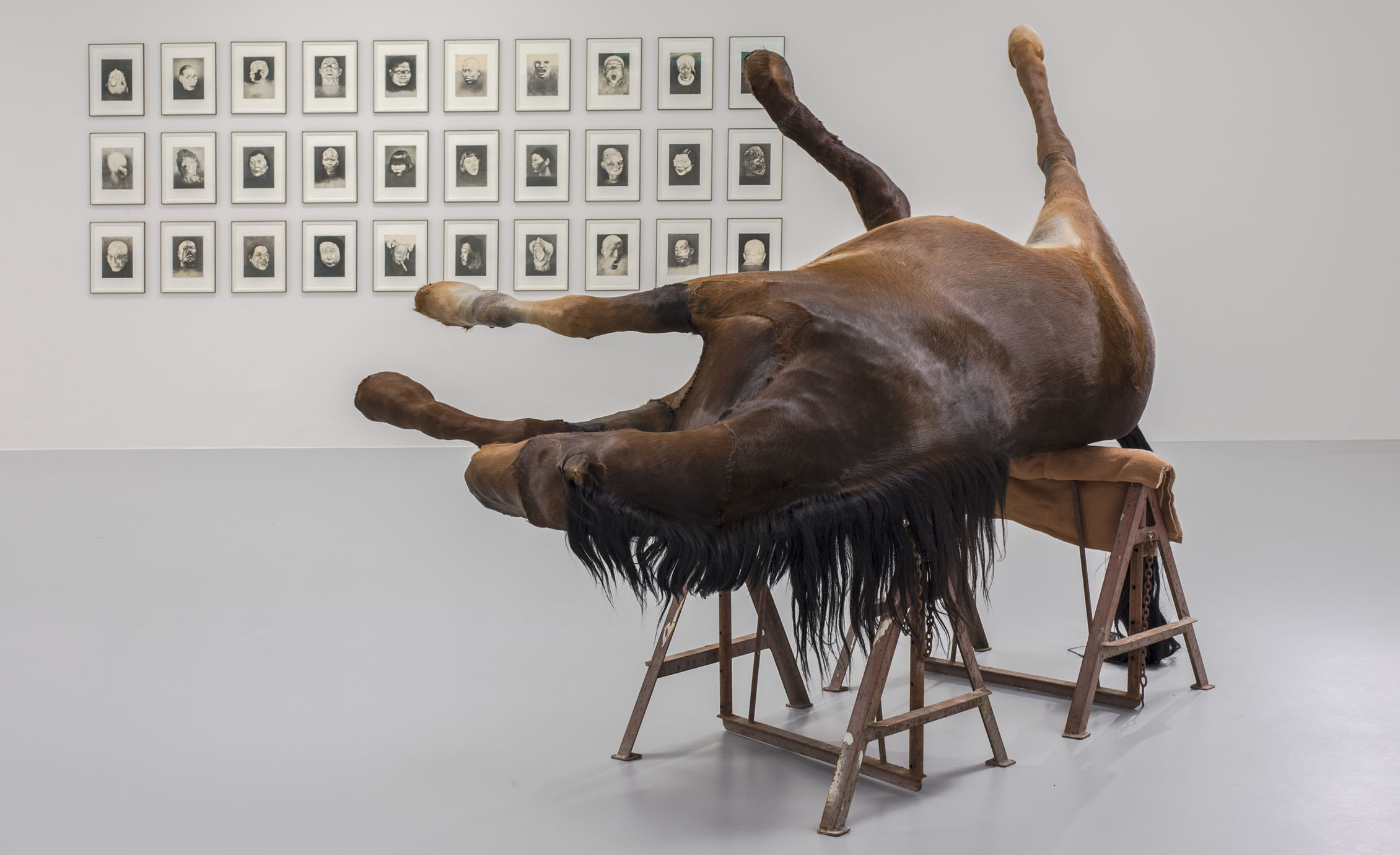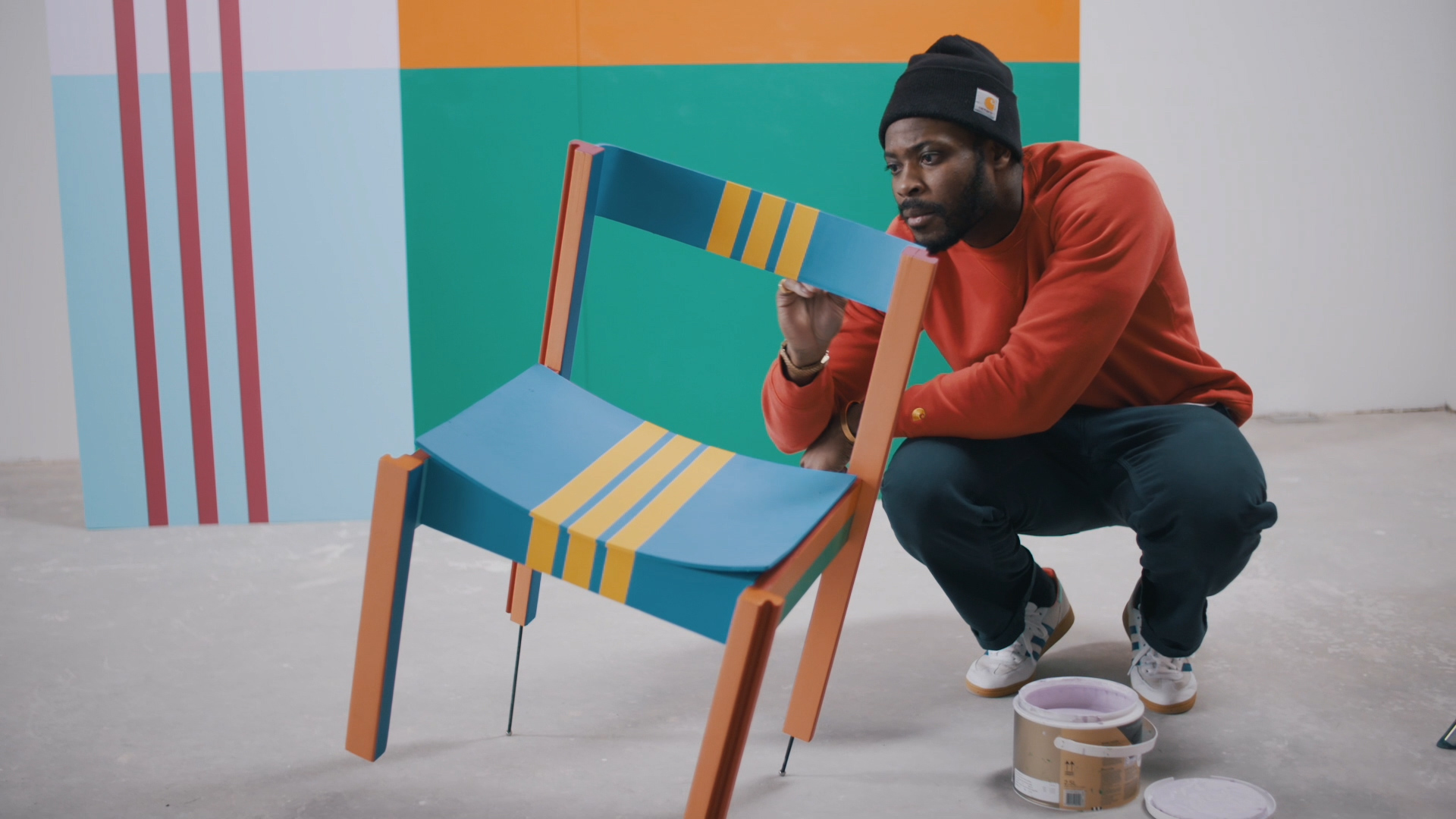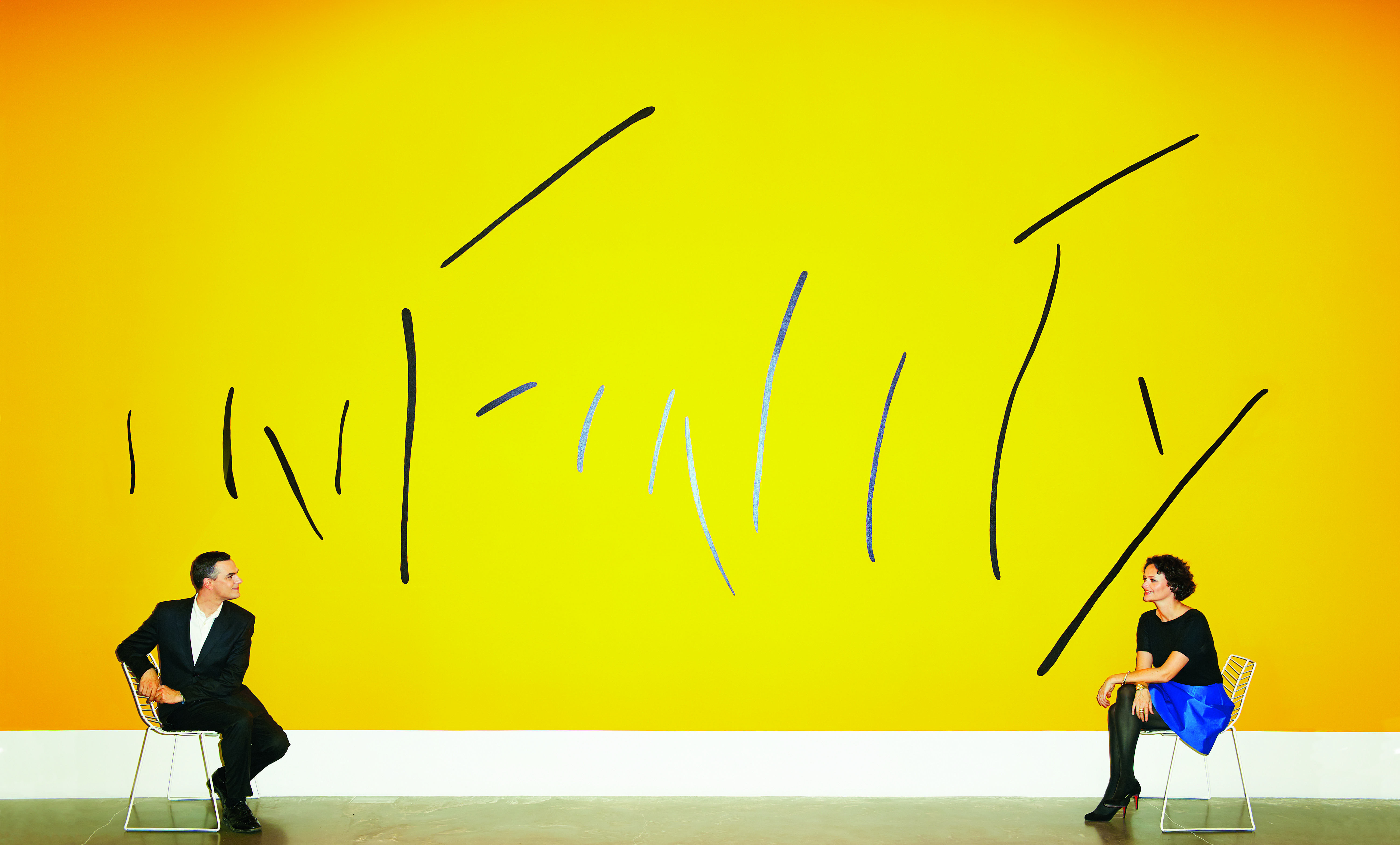
Among the Akan people of West Africa, the funeral tradition of nsodie dates back to at least the 17th century. Sculptors, often women, create clay busts which are displayed in cemeteries in order to preserve the memory and the likeness of the dead. Ghanaian artist Kwame Akoto-Bamfo draws on this mode for his ongoing installation, Nkyinkyim, which is comprised of more than 1,300 cement effigies embedded in a field in Nuhalenya Ada, a town outside Accra. Whereas traditional nsodie are idealised representations, and the faces usually wear a calm expression, Mr. Akoto-Bamfo’s heads show fear, sadness, disgust or surprise. The sculptures depict young and old, male and female, as well as members of different tribes.
The Adinkra symbol for Nkyinkyim translates in English to “twisted” and relates to a proverb that says, “life’s journey is twisted.” The project is a means of commemorating the millions of people from Africa who were imprisoned, kidnapped or coerced into slavery. The site of the installation is poignant, for Nuhalenya Ada was a stopping-point on the slave trade route in the 16th and 17th centuries, first for the Dutch and then for British traders. The majority of the slaves transported to Virginia were Senegambians (what is today Senegal, Gambia, Guinea-Bissau and Mali), followed by the Akan people of the Gold Coast (Ghana), the neighboring Windward Coast (now Ivory Coast) and others from the Bight of Benin (today’s eastern Nigeria and Cameroon).

Akoto-Bamfo first started making the cement heads in 2010 after learning about Akan and other local burial rites; he began to install them in the field near his studio in 2018, nearly 400 years after the first slave ship landed at Point Comfort in Virginia. He chose cement rather than clay largely because it is cheaper, but also because it is capable of withstanding Ghana’s mixed climate. The design for each comes from his imagination and it can take from a few days to several months to complete an individual head, depending on the detail and araciality of materials. Although the Nkyinkyim installation focus on death rites, slavery and representations of Black bodies, the artist’s wider practice, including “The Ancestor’s Project,” draws on multiple narratives and influences from African histories and cultures.
Since Akoto-Bamfo first had the idea for Nkyinkyim, he has enlisted the help of ten artists, apprentices and volunteers from Accra and Nuhale Ada, as well as researchers. The aim is to eventually create 11,111 heads—a goal intended to represent strength in numbers in the current open-air site. Depending on fundraising initiatives, this could take up to a decade and the installation currently consists of over 1,500. The work receives support from the Ghana Museums and Monuments Board, which gives artists access to the slave castles and monuments related to Ghana’s history to inform future research.
Earlier this year, 111 nsodie from the installation were placed as a permanent display at the National Memorial for Peace and Justice in Alabama (now closed due to COVID-19 restrictions). According to the artist, the selection on view in the US draws attention to the global implications of the slave trade, as well as the shared ancestry of African Americans and Ghanaians, through the diaspora.







